Does San Francisco Need Another Expensive Omakase Restaurant? It does — If It’s Sushi Nagai
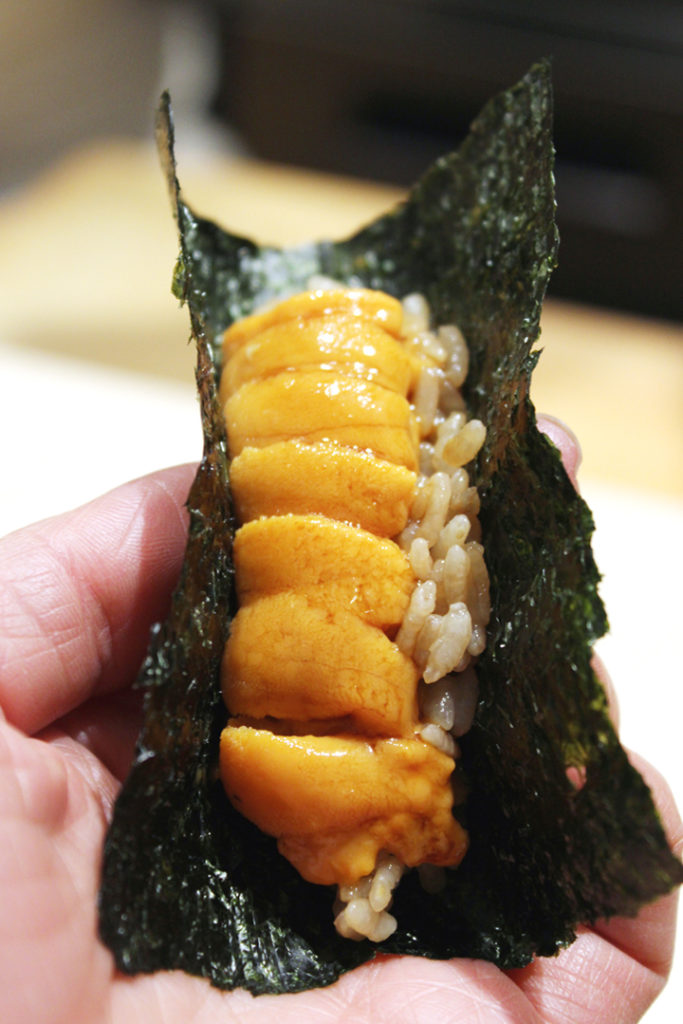
At his Sushi Nagai on Union Square in San Francisco, Chef Tomonori Nagai may specialize in Edomae-style, considered the purest and one of the oldest forms of sushi, developed hundreds of years ago as a way to preserve fish in salt, vinegar or seaweed.
But he is not above putting his own spin on it with flair, wit and technique, as I found out when I was invited in as a guest of the restaurant earlier this month. After all, where else can you get a play on a hot dog that’s fashioned from uni? But more on that later.
The restaurant, which is across the street from Macy’s, opened quietly in spring but is now having its grand opening.
San Francisco has seen a number of high-end omakase restaurants of late. Sushi Nagai joins that roster with menus priced at $200, $250, and $350-plus. Each comprises about 18 courses, with the more expensive menus featuring more premium ingredients and intricate dishes. At the media dinner I attended, we were treated to the $350 menu.
Growing up in the small coastal town of Iwaki, Nagai had wanderlust and thought the best opportunity to explore more of the world was to become a French cuisine chef. But after a stint at a hotel in Tokyo, where he ended up working the sushi bar because they were short-handed, he found his voice in his native Japanese cuisine.
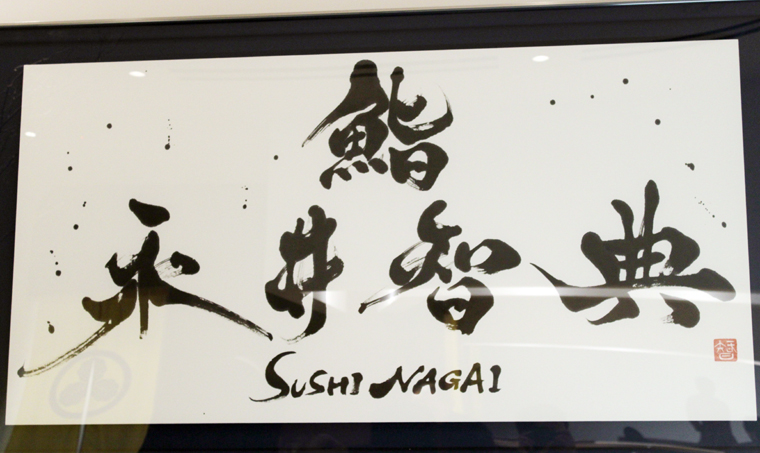
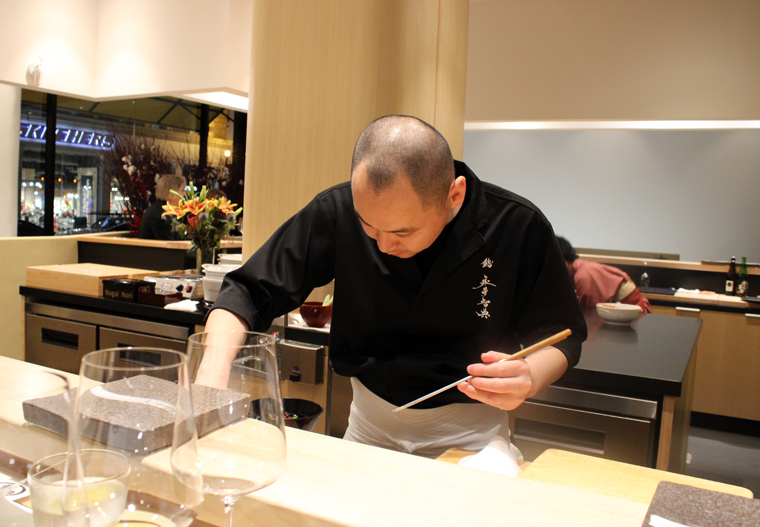
After working at Morimoto in Honolulu, where he ended up serving sushi to then-President Barack Obama, and the Michelin-starred Shinji by Kanesaka in Singapore, he was recruited to head the new sushi restaurant in San Francisco.
Nagai may be shy and soft-spoken, but he commands the 20-seat, U-shaped sushi bar with quiet fortitude. The servers, dressed in kimonos, are at the ready to show images on an iPad of the whole fish whenever you receive a piece of sushi showcasing one that you may be unfamiliar with.
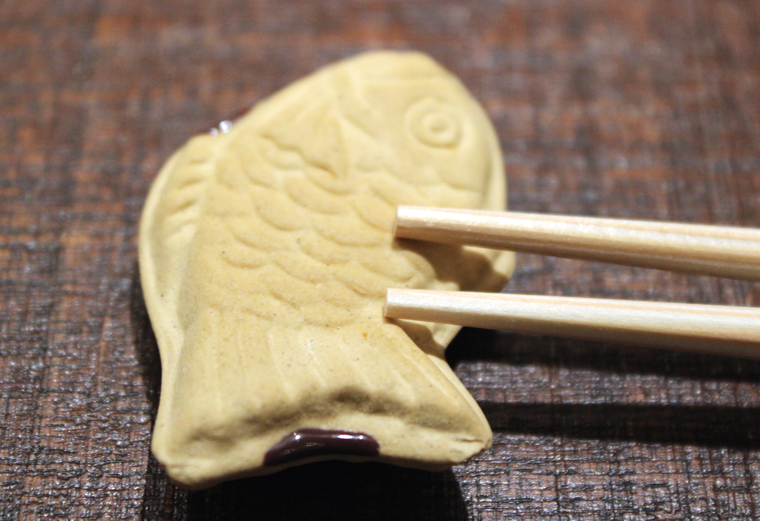
Seafood is flown in twice a week from Toyosu Fish Market in Japan (formerly Tsukiji Fish Market). He uses a blend of two different rices for his sushi — an umami-forward one from Akita and a sticky-textured one from Toyama. Interestingly enough, he forgoes the typical rice vinegar, and instead mixes in two different types of red vinegar from Chiba and Tokyo, which color the rice brown and add even more umami oomph. At first I feared the flavored rice might overtake the actual raw fish on top. But it doesn’t overwhelm.
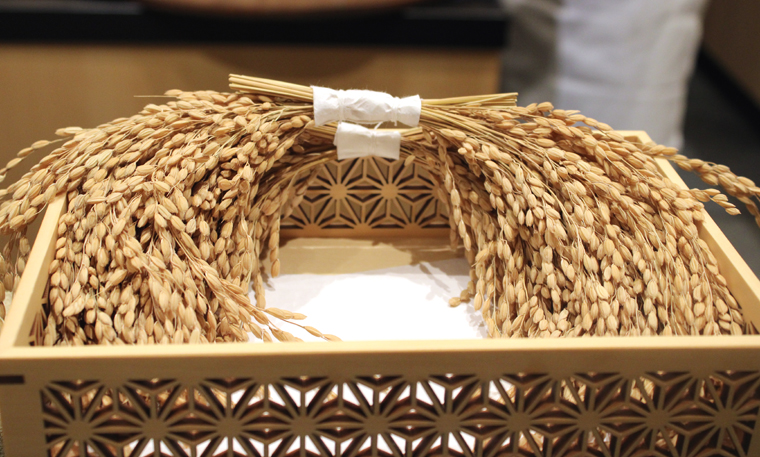
The first course is a three-fer: a tiered bowl with tender yet toothsome abalone with some of its cooked innards on top; then another dish that holds Japanese octopus accented by Half Moon Bay wasabi; followed by one of the most unusual ingredients I’ve ever had — shirako. The small white opaque globules are actually the sperm sacs of a male cod. Yes, you read that right. That might make you squeamish. But the flavor and texture are actually quite tame. They are very squishy, creamy and custard-like.
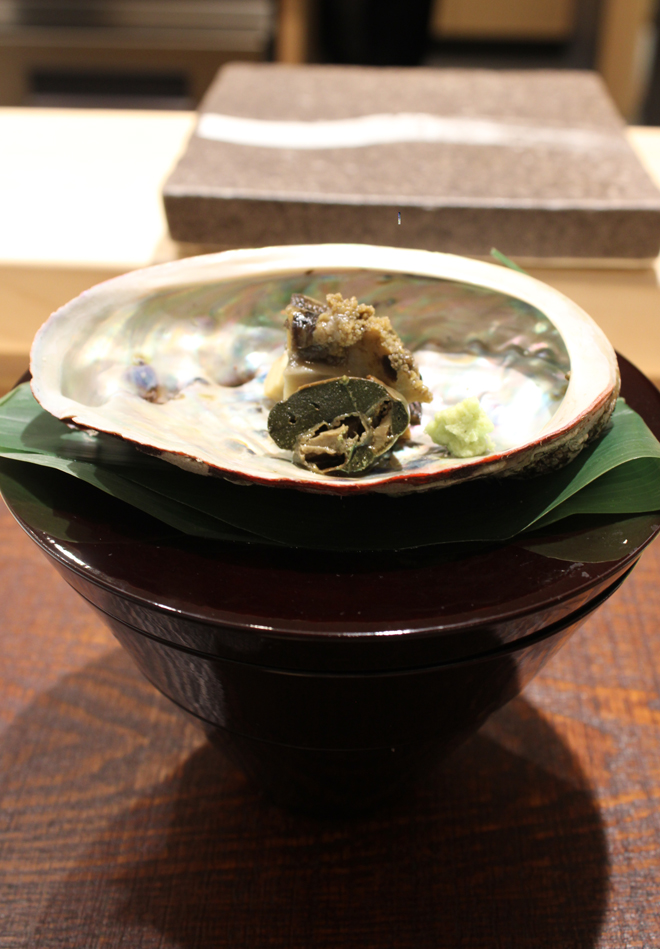
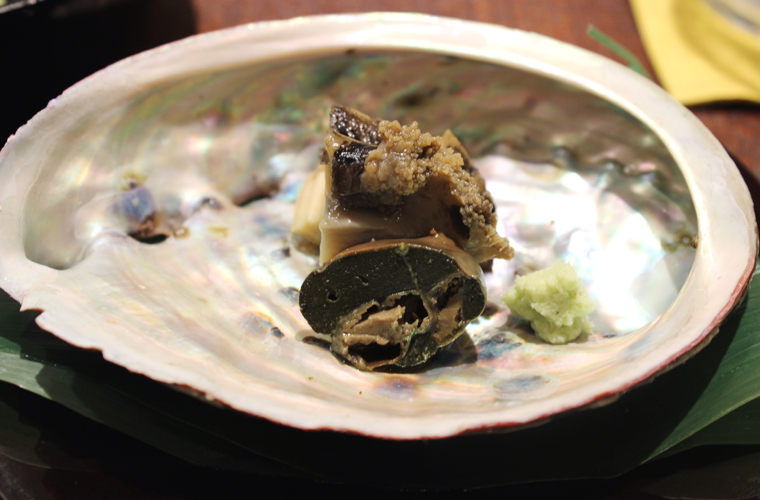
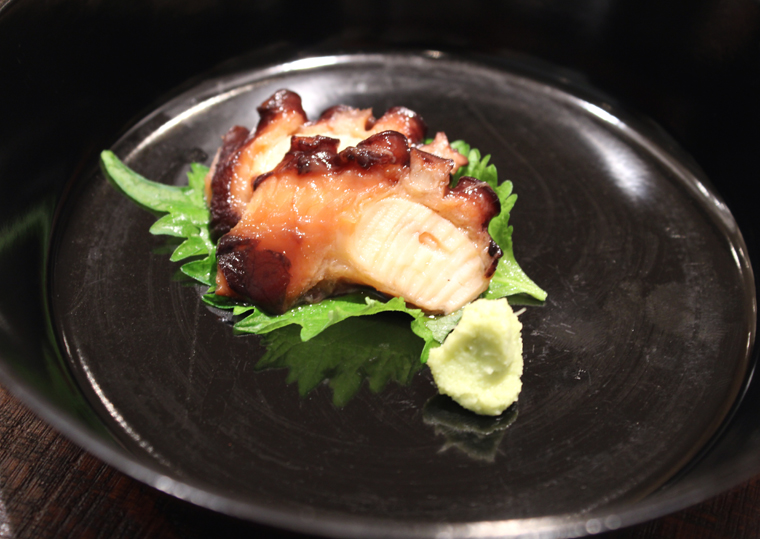
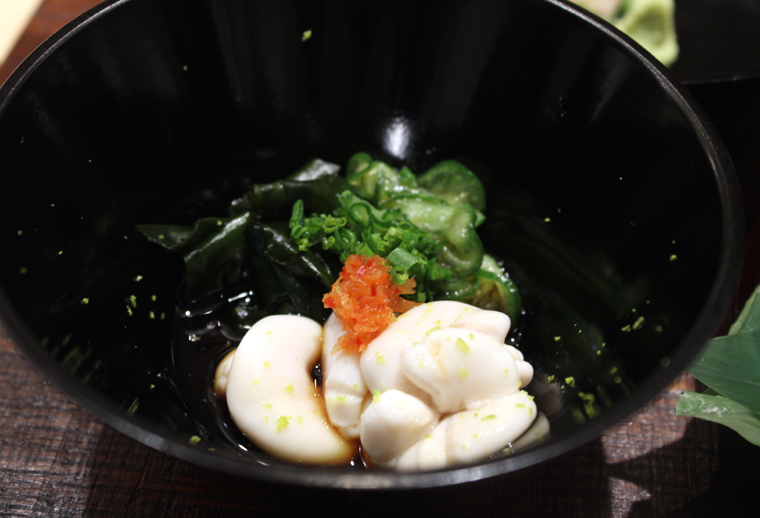
More creaminess arrived with segments of Japanese filefish tossed with a sauce flavored with ponzu and the fish’s own liver. It was like eating fish salad.
The dish arrives with a cup of hot sake steeped with the dehydrated, roasted spine bone of the fish. It’s soothing, with a deep briny taste and the warmth of alcohol hitting the back of the throat. There’s a restorative quality about it similar to drinking bone broth.

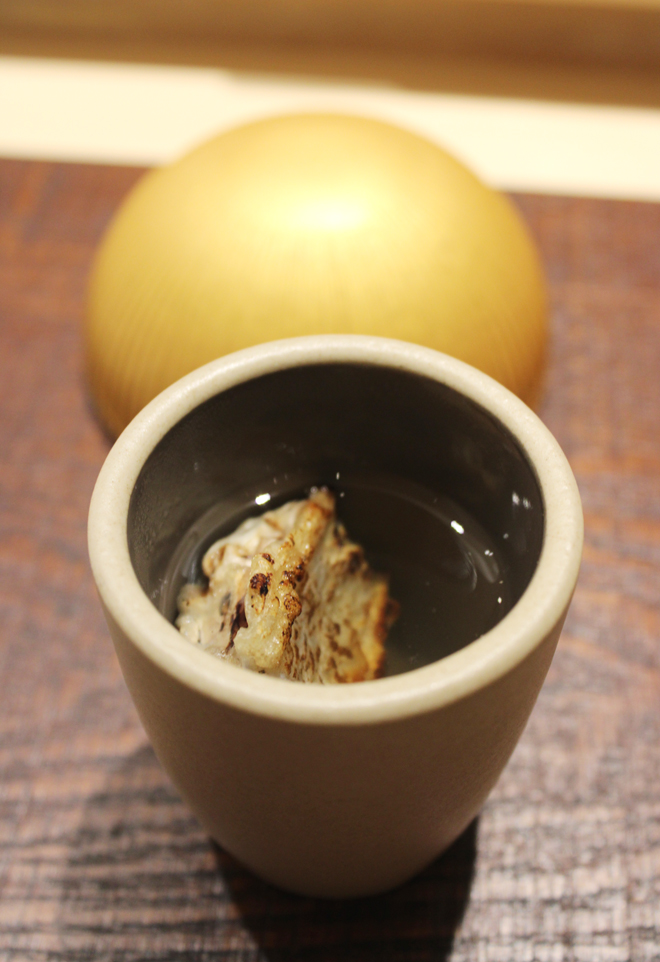
Next came one of my favorite dishes — applewood-smoked katsu fish served with an ume-sake dipping sauce. The silky fish was as smoky as Southern barbecue.
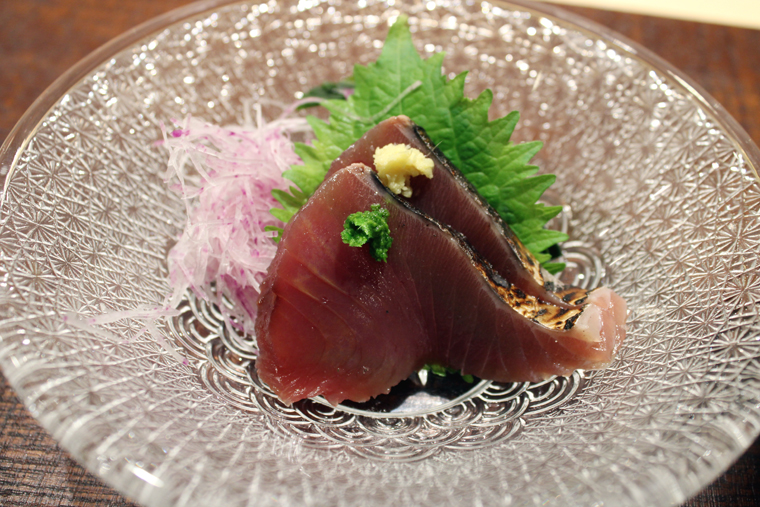
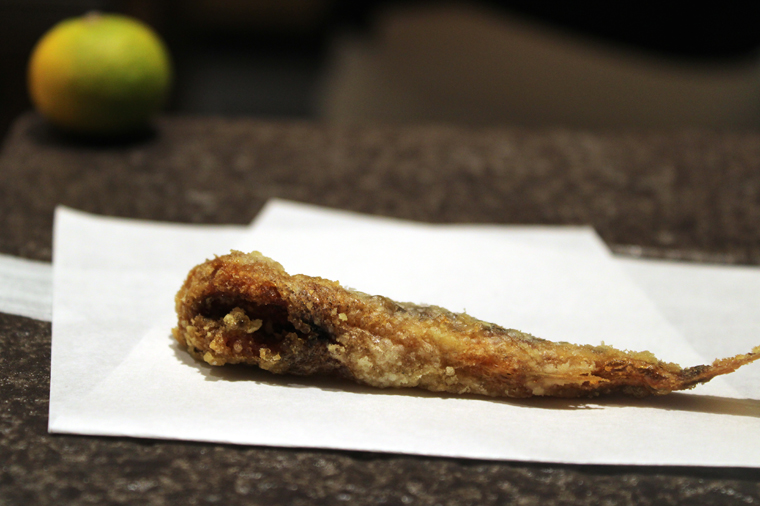

Nagai, whose father worked at a fish market and was an avid fisherman, grew up eating Mehikari, a tiny green-eyed fish from his hometown. He shows it off here deep-fried. Squirt on some sudachi citrus, similar but smaller than yuzu, and crunch away on the whole thing.
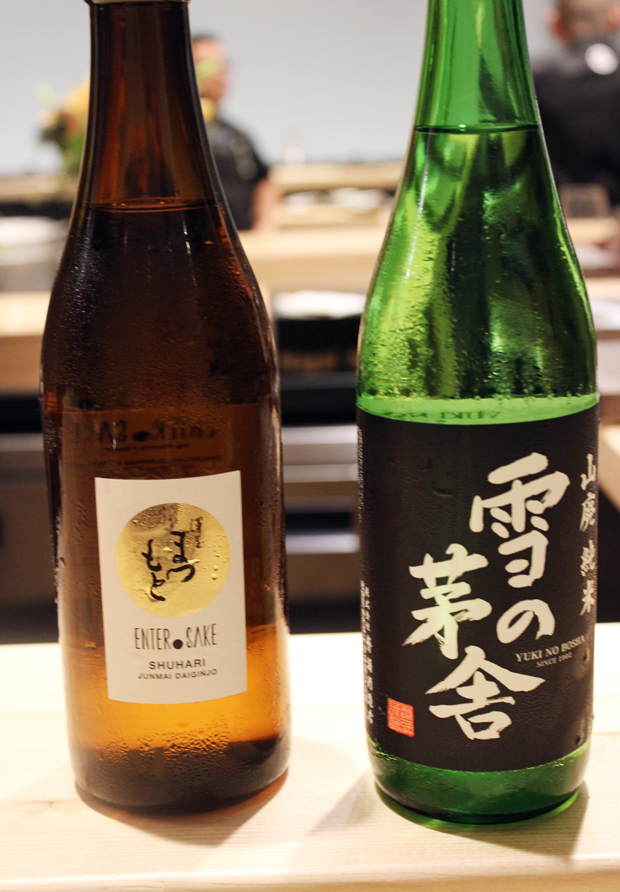
He makes his own pickled ginger in-house. Unlike the typical thinly shaved slices, he cuts his ginger in diced form, preferring the texture that way. I can see why. It’s almost as if the pickled ginger is juicier that way.
More sushi is next: a supple golden eye snapper followed by clean, sweet tasting sea perch stuffed in a hand roll.
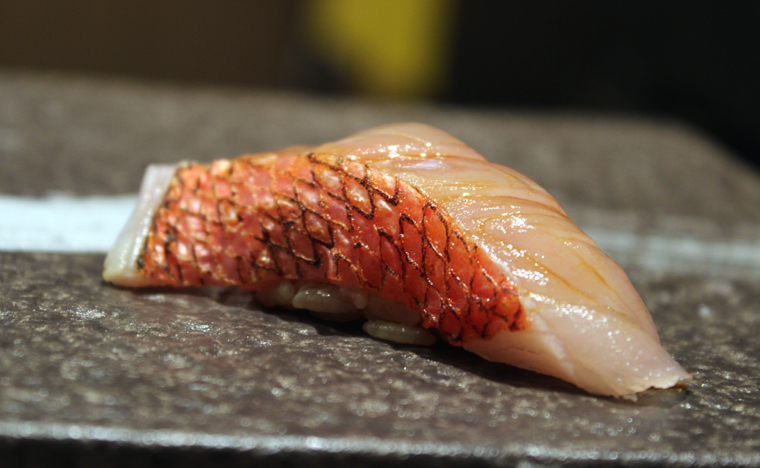
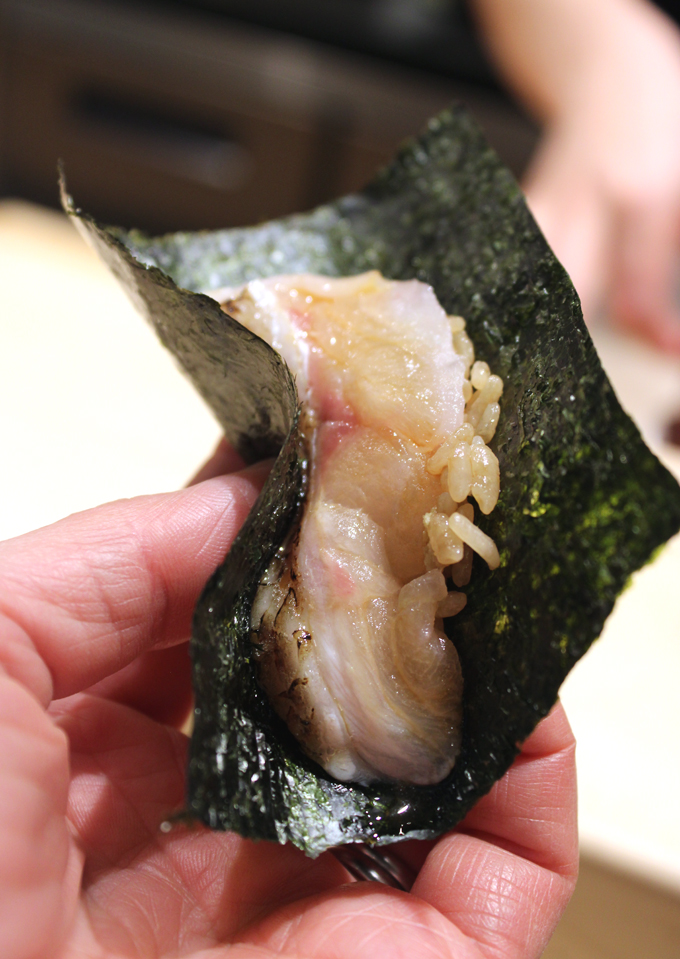
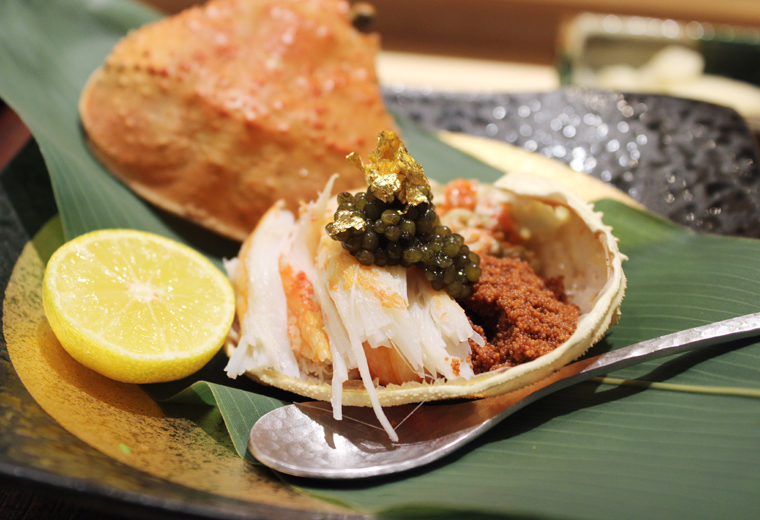
Then comes the snowy, fluffy meat of a female snow crab, dolloped with caviar, as well as its own eggs, and a touch of gold leaf.
Nagai shows off bluefin tuna in three cuts to let you experience the differences between the leaner, meatier tasting part, then a medium fatty section that’s decidedly lusher, and lastly, the fatty part that just melts on the palate.
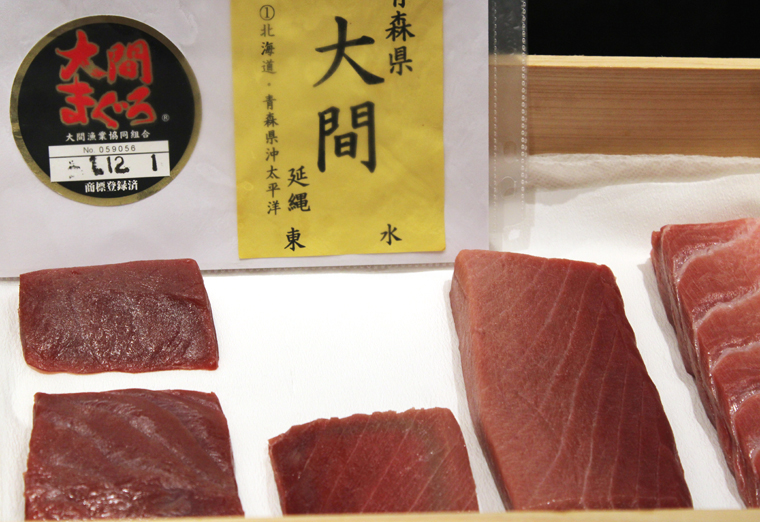
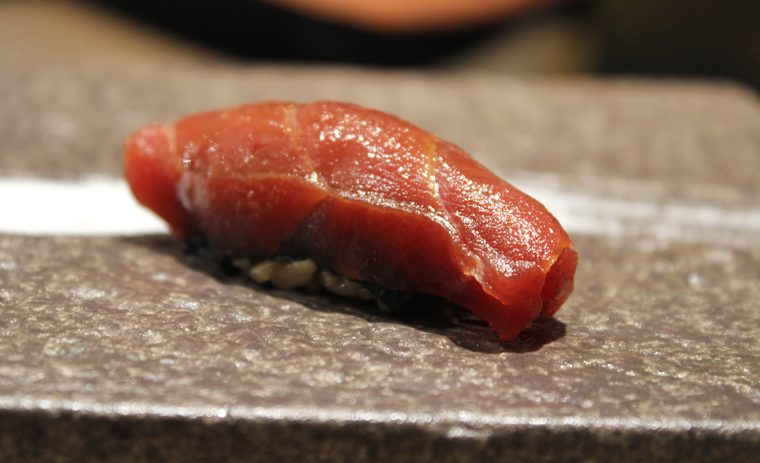
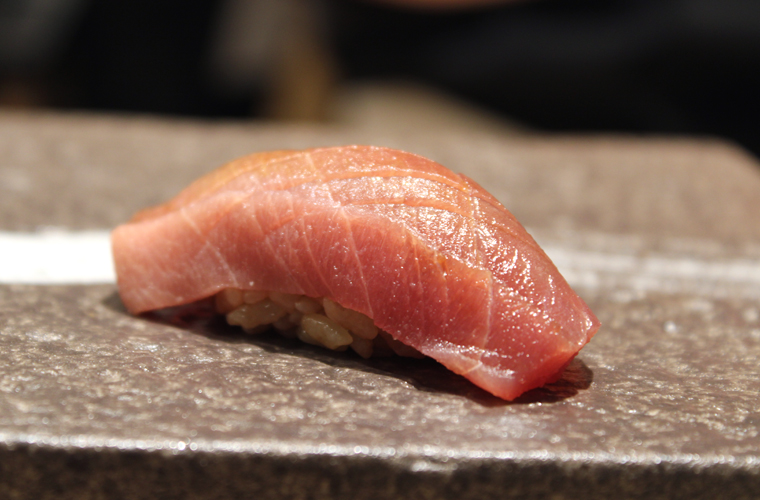
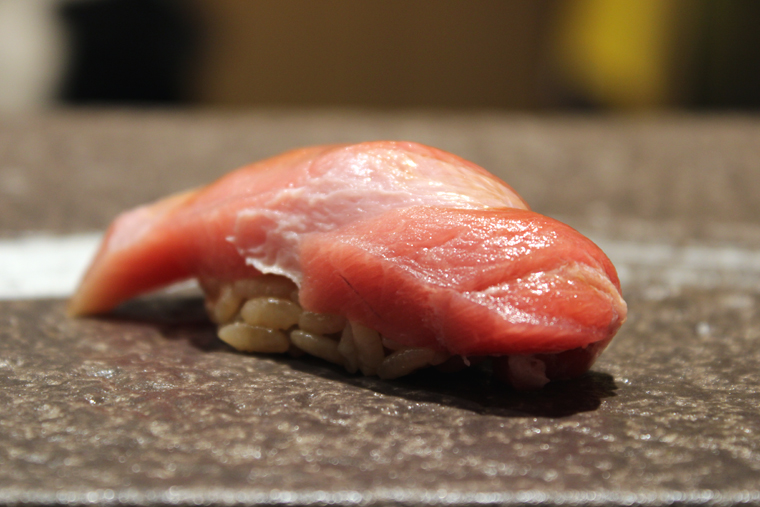
Wild yellowtail is briefly dunked into broth shabu shabu-style before being served with a bit of dashi and smidge of spicy yuzukoshu citrus-infused chili pepper paste. The barely blanched fish remains delicate tasting yet gains greater savoriness and a nice pop of heat.
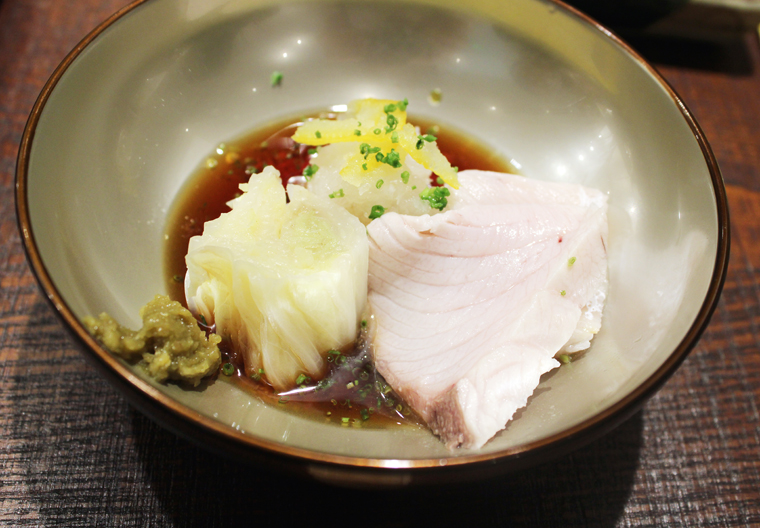
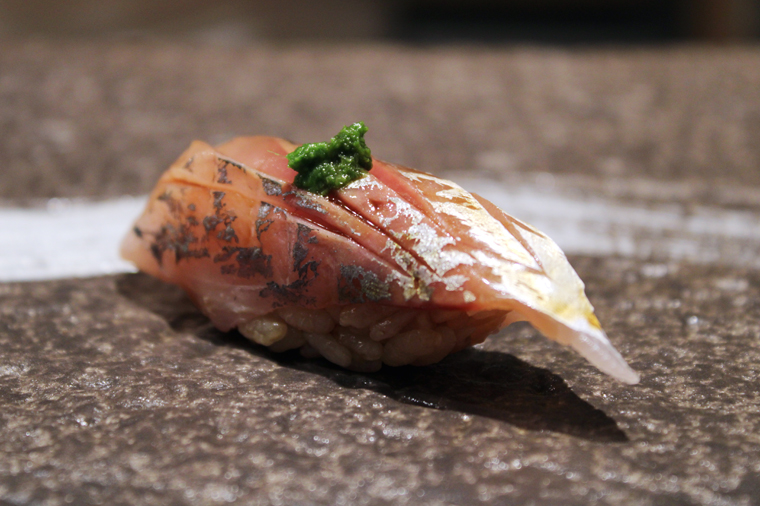
Aji or Japanese horse mackerel, fatty and rich tasting like unagi, is followed up with a giant scallop hand-roll. Because of my newly diagnosed allergy to scallops — wah! — chef was kind enough to substitute a dish of braised yellowtail for me instead. Floating in a soy-dashi broth with a round of daikon on the bottom that soaked up so much flavor, it was country-style comfort food.
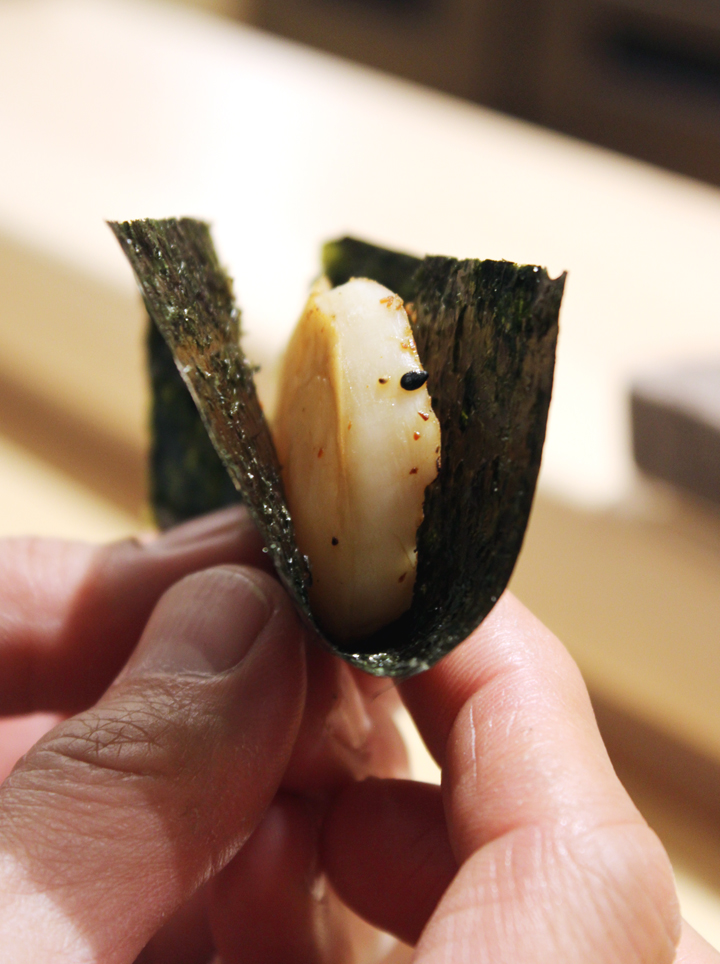
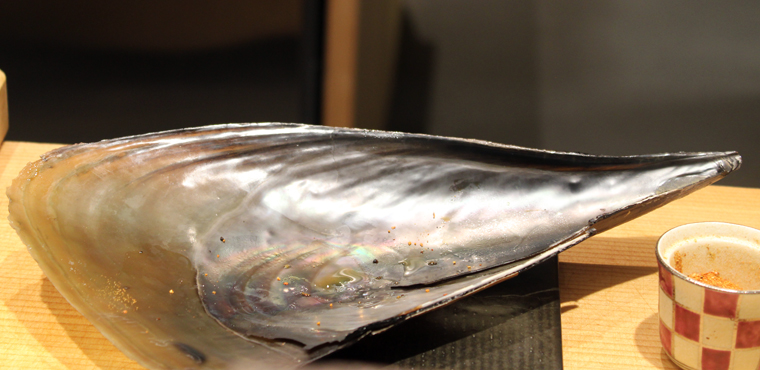
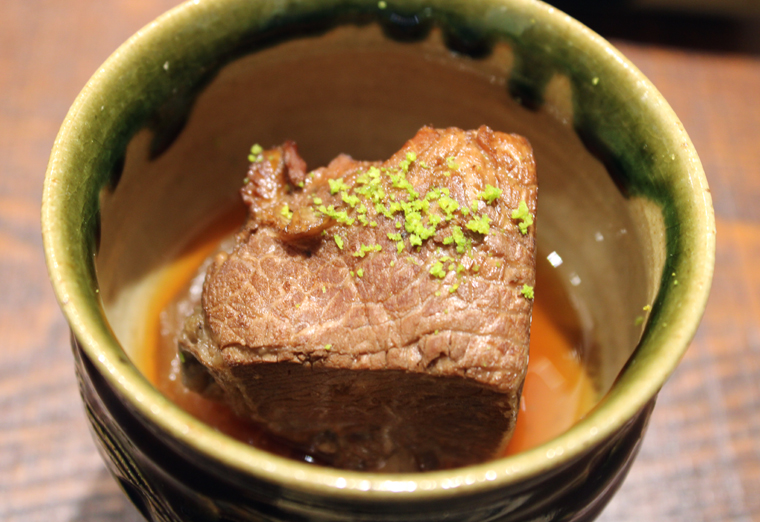
After a sweet, gorgeous Japanese tiger prawn nigiri came the Hokaido uni “hot dog,” a row of the lobes arranged down the length of a piece of nori like a sausage in a bun. It was not only fun to behold, but dazzling to eat, given the outrageous amount of the fresh, sweet tasting uni.
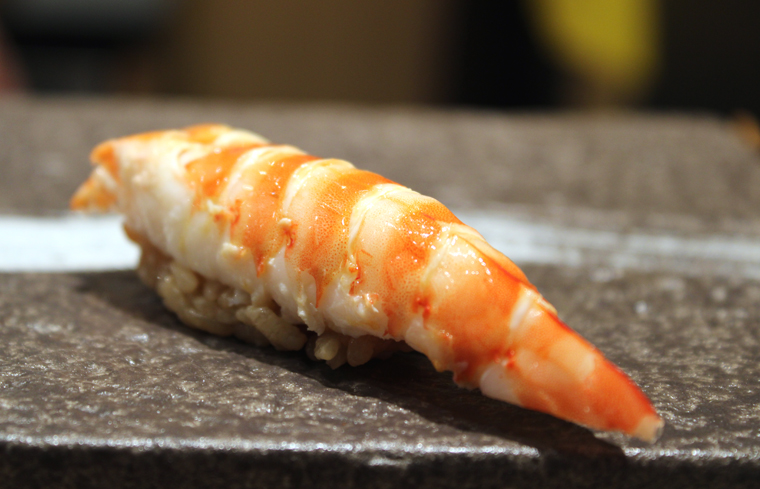
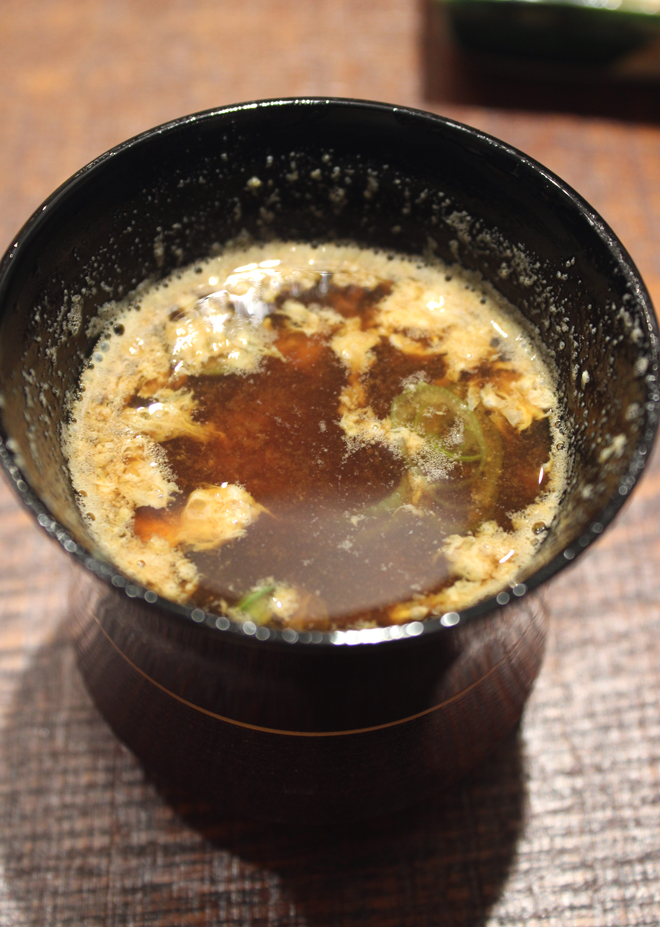
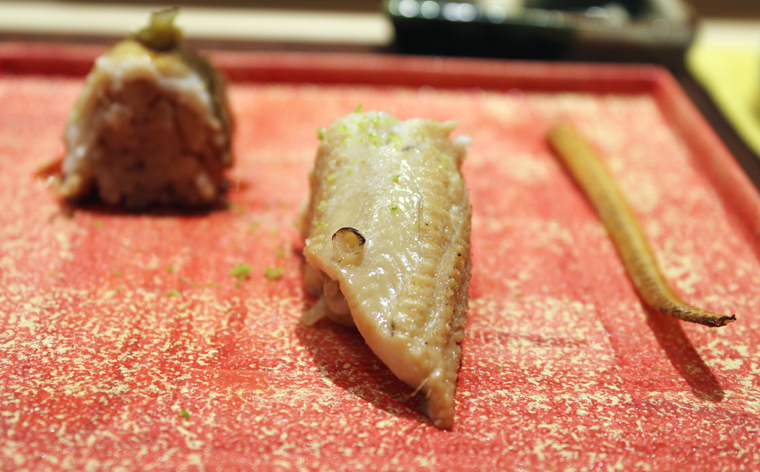
On a blustery evening, the bowl of red miso soup fortified with egg drop really hit the spot. It had a lick of spicy chili sauce, too, that married nicely with the briny, earthy fullness of the soup.
Conger eel arrived three ways on a plate: brushed with a sweet soy sauce; salted which made the flesh meatier and flakier; and its slender bone deep-fried to a crisp like a potato shoestring.
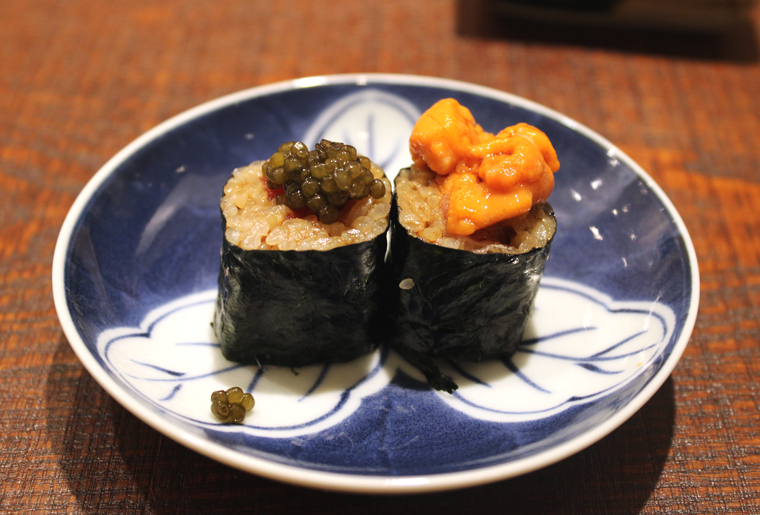
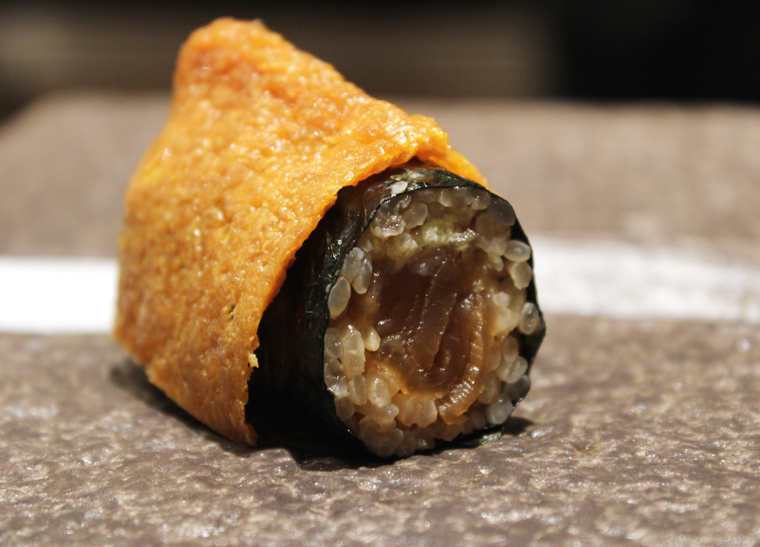
Then came slices of the fanciest tuna rolls — one adorned with caviar, the other with more uni. Then, another tuna roll snuggled inside a fried tofu skin.
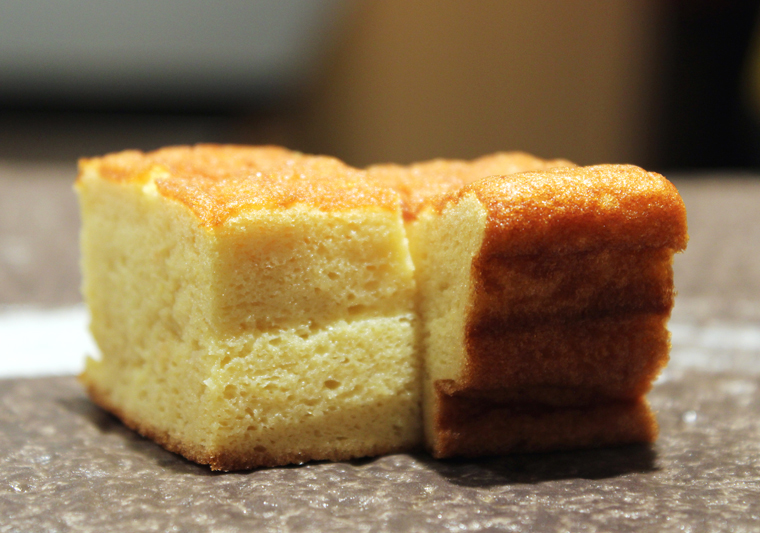
Nagai’s egg omelet is almost like a spongecake. He whips the egg whites separately and bakes the omelet rather than rolling it in a pan on the stovetop. It’s slightly sweet yet also savory from the pulverized shrimp in the batter. It’s probably the airiest tamago I’ve ever had.
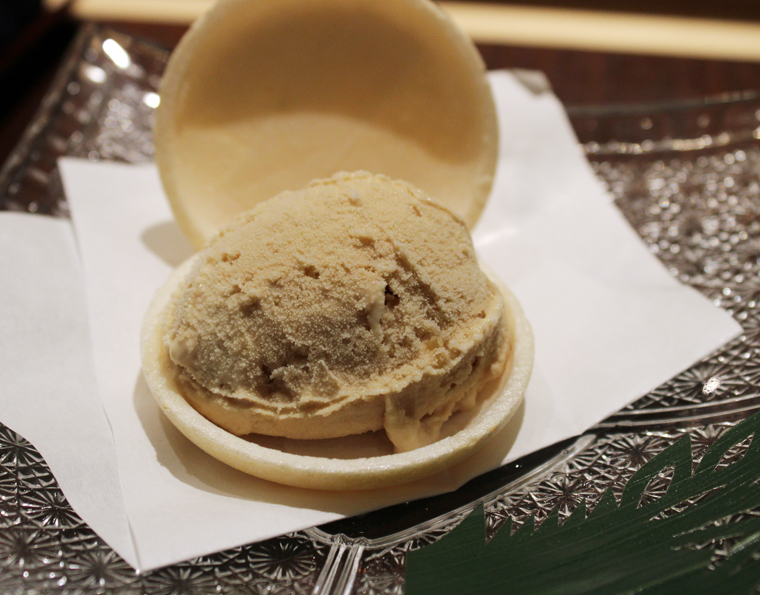
Dessert is simple: hot green tea and a small, fragile rice cracker clam-shell filled with caramel ice cream.
In the rough-and-tumble urban core of San Francisco, Sushi Nagai is a true enlightening oasis.

Looks “oishii”! Will have to treat myself on my Birthday.Edible works of Art. Are Reservations required?.
Michael: I would advise to make a reservation, as it’s not a very large restaurant. And happy birthday to you (in advance)!